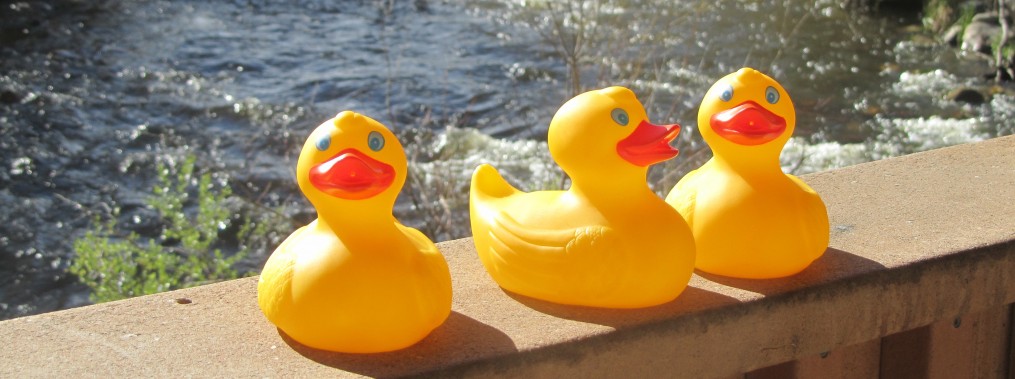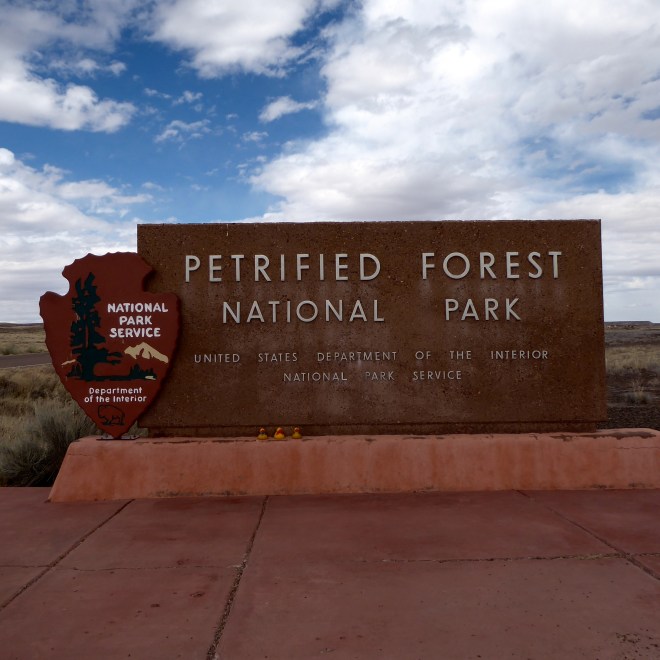Here we are, entering another National Park. Remember this is the 100th anniversary of the National Park Service, but several parks are older than 100 years.
But, what is petrified wood? This is the explanation from the National Park Service. Approximately 216 million years ago, these trees died and fell in a river. They were buried beneath layers of silt, mud, sand and volcanic ash, which protected them from decay. Mineral laden ground water percolated through the layers,carrying silica from the volcanic ash and other trace minerals. The absorbent dead wood became saturated with the minerals. The silica, or quartz, crystals slowly bonded with the cells of the tree replicating the organic material in perfect detail. Eventually, silica replaced the old material. Wow, that is pretty involved. The short version is a log is petrified when all the original plant material is replaced by minerals. First stop for us was the museum and Visitor’s Center. This is a petrified tree stump. We love the colors in the petrified wood.
Check out this long log.
This log, sometimes called “Old Faithful”, is 35 feet long and weighs 44 tons. Big and heavy. We are still in the northern Arizona desert and we loved this blooming cactus.
This is Agate Bridge.
The bridge is formed by a fossilized tree, 110 feet long. This tree flourished in a lush tropical forest 217 million years ago. The supportive concrete span was built in 1917.
It was very windy when we were here, so we rubber ducks had to be protected. We did not want to go in the river under the Agate Bridge. There are really two parts to the Petrified Forest National Park. Interstate 40 divides the park, with the petrified forest part south of the highway, and the area north of I-40 is the Painted Desert. These great colors are in the area of transition.
Years ago, before interstate highways were built, Route 66 from Chicago to Los Angeles was a favorite road. Route 66 came through this part of Arizona.
We also saw this 1932 Studebaker by the road. This is a real piece of Americana.
So many people drove this road and there are so many great memories here. Aren’t the colors of this Painted Desert beautiful?
There are many such lookouts into the canyon. We stopped at several of them. This is the famous Painted Desert Inn, now a National Historic Landmark.
We went inside. The old soda fountain is still there. We really liked this petroglyph.
Everything in this park is so wonderful and colorful. This is a panorama from the overlook of the Painted Desert Inn.
What an incredible view to watch the sunset and sunrise. We hope you stop to see the Petrified Forest National Park and also enjoy the Painted Desert. The gift shops here are wonderful also. We brought home some heavy bags. Petrified wood plaques are very heavy.













